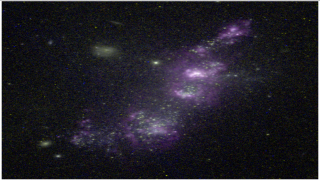Bibcode
Tenorio-Tagle, G.; Muñoz-Tuñón, C.; Silich, S.; Cassisi, S.
Referencia bibliográfica
The Astrophysical Journal Letters, Volume 814, Issue 1, article id. L8, 5 pp. (2015).
Fecha de publicación:
11
2015
Número de citas
24
Número de citas referidas
22
Descripción
Our arguments deal with the early evolution of Galactic globular
clusters and show why only a few of the supernovae (SNe) products were
retained within globular clusters and only in the most massive cases (M
≥ 106 M⊙), while less massive clusters were
not contaminated at all by SNe. Here, we show that SN blast waves
evolving in a steep density gradient undergo blowout and end up
discharging their energy and metals into the medium surrounding the
clusters. This inhibits the dispersal and the contamination of the gas
left over from a first stellar generation. Only the ejecta from
well-centered SNe that evolve into a high-density medium available for a
second stellar generation (2SG) in the most massive clusters would be
retained. These are likely to mix their products with the remaining gas,
eventually leading in these cases to an Fe-contaminated 2SG.
Proyectos relacionados

Grupo de Estudios de Formación Estelar GEFE
El proyecto interno GEFE está enmarcado en el proyecto coordinado, ESTALLIDOS, financiado por el plan nacional desde el año 2001. El ultimo proyecto aprobado es ESTALLIDOS 6.0 (AYA2016- 79724-C4-2-P). En el proyecto GEFE trabajamos en base al caso científico del proyecto ESTALLIDOS 6.0. Los estallidos de formación estelar (Starbursts o SB) son
Casiana
Muñoz Tuñón